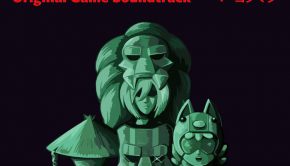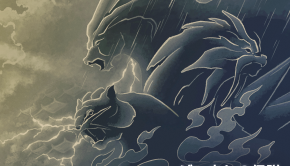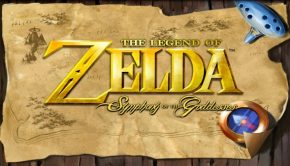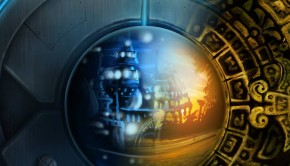The Legend of Zelda -Twilight Symphony
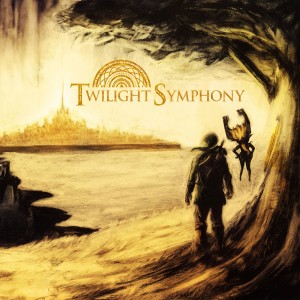 |
Album Title: Twilight Symphony |
| Record Label: Joypad Records |
|
| Catalog No.: N/A |
|
| Release Date: November 2, 2012 |
|
| Purchase: Download at Official Site |
Overview
Zelda Reorchestrated, or ZREO for short was, at a point, one of the most recognized Legend of Zelda websites on the internet. Starting in 2004, the ZREO team has produced orchestrations of some of the most beloved music in the franchise, and even released a full rearranged album of The Legend of Zelda: Ocarina of Time. Around 2010, ZREO officially announced Twilight Symphony, which at first seemingly began as a simple orchestration of The Legend of Zelda: Twilight Princess’ music, however over years of development, became an entirely different beast. ZREO eventually started a kickstarter campaign which quickly produced enough money to hire a live choir and additional instruments for the album. Finally after years of development, Twilight Symphony was released digitally in 2012, spanning roughly three hours of music. With arrangements from Wayne Strange, Tim Stoney, Eric Buchholz, and additional arrangements from Sam Ferrara, Jake McCoy, Nick Perrin, Leonard Cheung, Braxton ‘Skotein’ Burks (of Pokemon Reorchestrated fame), and Alex Bornstein, alongside both live instruments and choir, how does this immense project compare to the original’s music?
Body
Before I dive into Twilight Symphony’s music, a note must be said about the original Twilight Princess’ soundtrack. Composed by Nintendo mainstays, Toru Minegishi, Asuka Ota, and Koji Kondo, Twilight Princess featured a very complete, orchestral sounding score, which worked quite favorably with the game. “Hyrule Field” stood out as both the main theme of the game, and as Link’s primary motif. “Midna’s Theme” also held huge relevance in the game, as the story not only revolved around her, but subtle appearances of the theme usually signaled an overall important plot point in the game’s story. Other classic themes, like “Zelda’s Lullaby”, “Ganon’s Theme” and, of course, “The Legend of Zelda Main Theme” made their appearances, in a cohesive, occasionally dark, yet very moving soundtrack. Unfortunately, although Kondo-san originally wanted a full orchestra to play the bulk of the soundtrack, Nintendo went with a MIDI-only approach. To add to Twilight Princess’ woe, the music was never given a full release, with certain tracks getting released sporadically through Club Nintendo and other released CDs. Thus, Twilight Symphony not only gives listeners the chance to experience the game’s story through music, but it also finally gives the soundtrack a much better sound quality.
We begin with the first arrangement, “Overture,” which introduces the score’s principal themes, while predominately featuring the game’s “Introduction – Title Screen” music. We hear snippets from “Midna’s Theme”, “Hyrule Field” which even features the original brass accompaniment from “The Legend of Zelda Main Theme.” The track also puts a spotlight on the choir, which sounds wonderful under Tim Davis’ (Glee, The Elder Scrolls V: Skyrim) direction. The live instruments also sound stellar as they pop up in the track. Overall, not only is the arrangement a leg up on the original’s intro, but it functions extraordinarily well as a classical overture, setting the mood for the adventure to come. “Back from the Spring,” based on one of the earliest scenes in the game, features some lovely harp stringing as an “at dusk” introduction, before bringing an inspired live French horn in the mix. We smoothly transition into “Ordon Village,” featuring ocarina work from David Ramos. The backing guitar, violin, French horn, and viola work sound great as well, although they can be somewhat overshadowed by the MIDI instrumentation. The song works as a suite style piece, transitioning to a quiet version of the piece, and then growing louder and more dramatic with the live choir, alongside hints of “Hyrule Field.” The piece works great, and is a nostalgic trip for anyone who played the game. “Ordon Ranch,” an oft-forgotten location in game, begins with a lovely sea flute call, sounding like Link’s bird call. With gentle French horn, violin, guitar, and piccolo work, the piece is still short, but sweet and memorable all the same.
“Into the Twilight” heralds the coming darkness of the game’s story, and provides the first glimpse of tension and drama in the soundtrack, underscoring the game’s kidnapping scene that kicks off the plot. It is also the first piece here to use neither the choir nor live instruments, though it still marks an improved quality over the original while maintaining the original’s arrangement. The song ends with a snippet of “Midna’s Theme” sending us straight into ZREO’s arrangement of “Midna.” Originally a light, yet brooding piece, used throughout Twilight Princess, here it has once again been transformed into a suite-style piece and one that works very well, perhaps better than “Ordon Village.” The song goes through several variations, mirroring Midna’s own character arc, before transforming into something completely unexpected, yet appropriate. “Midna’s Theme” was originally inspired by “Zelda’s Lullaby,” and even uses the same note structure, albeit in a different chords for the melody. Here, the theme takes “Zelda’s Lullaby’s” backing chords, yet uses the same melody, resulting in a lovely fusion, obviously hinting at Midna’s identity. The song grows soft and ominous, before bringing the choir back and becoming a differently arranged version of “Midna’s Sacrifice”. In-game, this variation is played towards the finale of the game, but here it serves as a nice tribute of sorts. “Midna” is an early musical highlight overall.
Moving on, we have “Hyrule Castle Overtaken,” an arrangement of the classic “Hyrule Castle” theme, darkened now by the veil of war and twilight. This arrangement acts as an extension to the game’s original version. “Light’s Spirit’s Message” also appears throughout the game’s soundtrack, and it has once again been refined here, thanks to the choir performance, although again sometimes the brassy bits from the instrumentation become a bit loud. Soon the piece transforms triumphantly and gives way to a brief statement of “The Legend of Zelda Main Theme,” as Link returns as the hero. The piece transitions one final time into a surprisingly beautiful version of “The Great Fairy’s Fountain” which somewhat leaves me wishing that ZREO would have covered a full version of that piece… The song dies down with a sincere recap of the Zelda main theme and we continue onward with “Faron Woods,” which now contains a rustic quality to it. It sounds great, despite possessing no live instruments.
We come to our first two battle themes, “Ook and the Boomerang” and “Twilit Parasite Diababa”. The former is quite interesting, due to three elements: the live male choir performing shouts and grunts, some clever percussion instrumentation, and a rhythmic guitar. Unfortunately, this song suffers quite a bit as none of these elements contain the main melody, which falls to a pretty horrible sounding woodwind like MIDI instrument. The song has its moments here and there, but it can be rather annoying at times. “Twilit Parasite Diababa” fares a lot better, despite reusing some of the same samples from the choir’s last performance and dropping the live instruments. The track offers an important function, by introducing “The Hero’s Theme.” Whenever Link begins to win a boss battle, “Hyrule Field” comes on. The track also ends with the “Acquire Fused Shadow Fanfare,” a dark choral statement issuing forth from the above named relic.
And now, we come to the centerpiece of Twilight Princess’ soundtrack, the fantastic main theme of the game, “Hyrule Field.” The original piece functioned similarly to Ocarina of Time’s “Hyrule Field,” changing and adapting to Link’s movement on the field itself, alongside to any danger present. Twilight Princess’ “Hyrule Field” brought a much richer, and at times, more mature sound to the Zelda universe, featuring a very functional main theme that is used and arranged differently throughout the game. Here ZREO decides not to mess with a good thing, and keeps the arrangement very close to the original, despite adding some more brassy notes to keep the drama at a pulse-pounding height. A very inspired moment occurs towards the end of the track, as the choir is reintroduced nostalgically, and it sounds absolutely wonderful in context. “Kakariko Village,” another mainstay theme in the Zelda universe, was completely redone in Twilight Princess, giving it a more Native American feel, with the melody almost (but not quite) being completely different. Here, ZREO plays around a little with the music, beginning with “Renado’s Theme,” a mournful version of the theme, featured in game. The trumpet and French horn sound great, alongside pizzicato strings, but this quickly changes to a more “tropical” version of the theme, with guitar and woodblocks going on. After a few minutes, the theme calms down into a very relaxed version of the theme, bringing the ocarina and guitar to the forefront. Echoes of both “Kakariko Village,” the Zelda Main Theme, and even hints of “Kokiri Forest” and “Outset Island” from past Zelda games are heard in a lovely manner. Though different, the arrangement is entirely appropriate and shows some of ZREO’s creativity in music.
“Colin’s Kidnapping and the Battle of Eldin Bridge,” once again abandons usage of the choir and instruments, and yet holds up as a competent piece of dramatic battle/action music, despite the brass section in MIDI not quite holding up quite as well. The arrangement once again sticks very close to the original’s music, which was a very crucial point for Link’s heroics in game. “Death Mountain” starts out with a brief intro from “Goron Mines,” sounding much more mysterious, before transitioning into the track proper. This was never my favorite track in Twilight Princess, but here the improved sound quality and the male choir (going once again for guttural shouts) make up for it although it can be a bit overblown at times. “Goron Guardian Dangoro” is yet another battle track, that starts off ominously before becoming a fast paced, tambour based track. This arrangement definitely benefits from the sound quality boost, sounding more dynamic, and even scary at times. The newly added ending, reusing some notes from “Death Mountain”, is a bit cheesy sounding however. Disc 1 closes off with “History of Light and Shadow,” which is originally based off of Ocarina of Time’s “Creation of Hyrule,” remade to sound darker, due to the tone of Twilight Princess’ backstory. Although, strangely enough, ZREO decided not to use the live choir in this choir-driven piece, the MIDI facelift to the track still sounds quite good, and even better than the original’s dark atmosphere.
Disc 2 opens with “Lake Hylia”, beginning with an orchestral rendition of “Sun’s Song/Morning,” transitioning smoothly into the main track. Driven specifically by guitar, with accompaniment by flute, piano, and trumpet, “Lake Hylia” is a lovely track, and easy to fall in love with, due to its relaxed, restful nature. The ending, featuring a piano solo, guitar solo, and some floaty wooden sounds, is especially inspired. “Hyrule Castle Town,” on the other hand, sounds like we have stepped into a medieval world, representing the more jovial side of Twilight Symphony’s music. The vocal interlude, a la troubadour style (provided by Wayne Strange), sounds beautiful. The violin quartet also enters the soundscape later on and is quite lovely, however, the piece is interrupted and even ends on some explosive brass notes that are nothing short of annoying. There is a sneak peak at the “Malo Mart” theme which made me chuckle for a moment at the end of the song, though the track is quite discombobulating, overall.
“Rutela’s Wish” on the other hand is easily a highlight, being a solo piano piece that runs for 5 minutes, it is supremely lovely. Incorporating Ocarina of Time’s “Serenade of Water” and “Zora’s Domain” into a touching and reflective piece, ZREO shows a more subtle side of arranging here that is ultimately impressive and quite emotional. Kyle Landry shines here, in one of two piano solo pieces of the whole album. “Ralis, Prince of the Zoras” works in direct correlation with “Rutela’s Wish,” following an emotional story arc of a mother’s final wish and love for her child. Here, thanks to some solo instrumental work interweaved through the main melody, the song is emotional and powerful. “Ilia’s Theme” gets a brief spotlight as well, before we transition into a dramatic version of “Hyrule Field,” used occasionally in game to represent overarching emotional moments.
“King of Shadows,” marks Zant’s first real major appearance in the soundtrack, featuring a chaotic and dark look at the main antagonist of Twilight Princess. The song is primarily driven by piano, and later some maddening bells, trumpet, and string work. Overall, a great piece that touches on the darkness of the game’s story, while underscoring a dramatic and powerful scene. The music moves directly into “Midna’s Lament,” which was a highlight in the original game’s soundtrack, and is undoubtedly so here. The piano solo piece, featuring Kyle Landry once again, is simply divine, and its variations work increasingly well, fully using all the intricacies of “Midna’s Theme” in a very touching, dramatic, and sentimental way. “Princess Zelda” on the other hand is transformed into something quite different, as the arrangement still possesses its well-known melody, it also dives deep into the darkest hour of Hyrule. It’s not exactly my favorite rendition of her theme, as it strays too far into dramatic territory for my taste, but it still works well within the context of the story. The song ends directly with “Zelda’s Sacrifice,” and re-echoes “Midna’s Theme” in a very solemn way.
We’re off on the prowl of adventure once more in “Sacred Grove,” going again for a rustic, mysterious feeling, and certain references to A Link to the Past’s “Forest Theme,” before unleashing a beautiful and very true version of “Lost Woods/Saria’s Theme,” placing the ocarina once more in full center. It sounds great, although the sound goes a bit down with the “chaotic” version that occurs, for obvious contextual reasons (Skull Kid does have an appearance outside Majora’s Mask!). The track is yet another delightful, and surprisingly musically dense, highlight. Right in the dead center of the entire soundtrack is “Intermezzo,” another medley that features “Main Theme/Hyrule Field”, “Training,” “Ilia’s Theme,” “Twilit Igniter Fyrus,” “Guardians of the Sacred Grove,” “Master Sword Get,” and “Hero’s Fanfare,” and not only is it a brilliant way to not only recap the entire adventure, but it also moves the plot along quite nicely. Kudos to the ZREO team for producing the brilliant musical suite! It seriously sounds like something that could be played in concert. It’s that good. We rejoin the story with the lovely “Hyrule Field at Night,” using the live choir appropriately. The female vocals provided by Aubrey Ashburn are exceptional, although the brass hits kind of make the song a bit more dramatic than it needed to be, especially when the original was so understated.
Moving on, “Waltz of the Bugs,” is a bit of a strange track to cover, due to its source material, but it is still a delight, and is very well done. The violin work is especially inspired, despite the track’s overall bumbling, yet regal, tone. “Hyrulean Odd Jobs,” arranged specifically by Braxton Burks, is yet another medley based piece, featuring “Sera’s Sundries,” “Postman’s Theme,” “Fyer & Falbi,” and “STAR Game,” and is truly a collection of some of the weirder and quirkier moments of the Zelda universe. “Fishing Hole,” begins with a slight reference to “Sun’s Song,” before proceeding with one of the more relaxing themes in Twilight Princess, which sounds all the more lovely thanks to the updated sound design. ZREO once again outdoes itself here, taking things back, and allowing for the right enough of nostalgia to sink in. Continuing forth, we have “Gerudo Desert,” which plays out with a Saharan attitude, with guitar and male choir, along with some beautiful incorporation of a trumpet playing “The Legend of Zelda Main Theme,” a female singer gently singing “Midna’s Theme” and a windy soundscape. “Gerudo Desert” is yet another brilliant effort from the ZREO team. “Arbiter’s Grounds” also sounds great, despite going in MIDI only. It’s filled with the right amount of creepiness, mystery, and rhythm. It’s quite a shame, though understandable, that the team decided not use a whole lot of dungeon themes Brilliantly, there is a slight hint of “Zant’s Theme,” which grows until we have…
“Twilit Fossil Stallord,” another fast paced battle theme, with some quirky elements here and there, and a second half that is a reorchestration of “Dinosaur Boss Battle” from Ocarina of Time, growing in scope and chaos quite appropriately, transitioning into the “Boss Defeated Fanfare” in triumphant fashion. Disc 2 closes out with “Ganondorf’s Exile,” introducing the main final boss himself, along with his theme. This song incorporates the eerie and choir driven “Sage’s Theme,” sung well and mysteriously, and quite beautifully, before presenting “Ganondorf’s Execution” scene, along with “Ganon’s Theme” in a harsh chanted manner, that grows in such a way that I literally got goose bumps. We have a brief transition, actually “Escape from Ganon’s Tower” from Ocarina again, before we conclude with an even darker, and tragic version of “The Sage’s Theme” and “Ganon’s Theme” before letting the music fade into nothingness.
The sound of arctic wind pierces the beginning of Disc 3, with “Snowpeak Ruins,” though “Hyrule Field” echoes in the background. Distant choir screams signal something dark on the approach, while we enter the surreal “Snowpeak Runis” song proper, which has hints at both darkness and general silliness at the same time. The track does give an uncomfortable feeling, as there’s something odd of using both these elements: which is once again effective both originally, and here, thanks to ZREO bringing out the dark side in a growing fashion. We transition abruptly to the sound of a soft music box, which suddenly grows into “Twilit Ice Mass Blizzeta,” another boss theme, which focuses on bells, choir, and organ work, despite going for a MIDI route again. It works, once again using a contrast between the “sweet” and the “creepy.” The second half of the song works better using rising string work to really emphasize a battle, and it has been slightly arranged to bring this element out better. “The Hero’s Theme” once again shines effectively as Link begins to fight back and win. The track ends once again with the “Boss Battle Victory Fanfare”, but also uses a hint of “Snowpeak Ruins” to recap this story arc.
“Snowboarding,” which was originally a more techno, bass focused piece, works somewhat differently with a more orchestral sound. It still sounds good, despite the original version having a very unique sound that isn’t quite heard anywhere else in Twilight Princess. Despite that, “Snowboarding” is still a thrilling and respectable listen, despite ending… weirdly however. “A Door to the Past” more than makes up for it, now a beautiful orchestral rendition of the “Temple of Time” music from Ocarina and Twilight Princess, combining even “Midna’s Theme” in the mix, which sounds impressive and is a nice touch from ZREO. The song transitions, becoming more dramatic, and more choir centered, a sound we quite haven’t seen from the usually solemn “Temple of Time.” The song then changes into the “Temple of Time” dungeon theme, sounding mysterious, and possessing a very different time signature, which gives it a sense of “time” so to speak. The arrangement is quite delectable, and quickly becomes an album highlight due to ZREO’s prowess at combining themes. “Ooccoo, Fellow Adventurer,” was always a very odd, yet cute theme that followed your other companion from the game, and the arrangement from ZREO is quite enjoyable. Following this, we come to another boss battle, “Twilit Arachnid Armoghoma,” which is a more bumbling boss theme in this story. It’s not bad at all, but definitely not the best one out of the bunch. “The Hero’s Theme” works better here, and is featured more prominently. The highlight of the track however is the “Boss Battle Victory Fanfare” fakeout…revealing that the battle isn’t quite over… it just got way sillier.
A lone trumpet heralds the way for one of the fan favorite themes of Twilight Princess, the very Western inspired “Hidden Village.” The guitar work and light choral work is a true tribute not only to the original Nintendo team’s sound design, but to the famed Spaghetti Western movies of yesteryear. ZREO takes a few different approaches with the arrangement to bring the song a fuller and richer sound, while also incorporating several themes into the mix, “Hyrule Field,” “Ilia’s Theme” and even “Midna’s Theme” get their chance in the spotlight, not only advancing the story thematically, but bringing a fuller Western feel to the song. “Ilia” comes next, bringing forth this character in a fuller and truer light, expanding her short theme in a very complete way, using almost all of the available arrangements used throughout Twilight Princess. This character, although often forgotten in this expansive mythos, still plays an important role, and can be seen as a romantic foil to Link, giving a very loving feeling the theme, especially when the new arrangement calls forth the Zelda Main Theme.” The song grows quiet, as Link departs once more to the very end of his adventure.
We resume very suddenly with another boss theme, “Twilit Dragon Argorok,” which grows in size and expansiveness. Originally this theme actually belonged to the boss of the Water Temple in this game and thus has a swirling, thunderous nature to it. But here, a battle with a dragon in the sky, it is still equally as expressive and appropriate. It is not as strongly arranged as it could’ve been however, and ZREO is once again stuck with a MIDI-only approach. “The Twilight Realm” ends up being another album highlight, beginning with “Phantom Zant Battle”, before slowing down and seeping into darkness as Link and Midna enter the true Twilight Realm. The light choral and piano work is simply lovely, along with the brief violin solo, and it truly represents the beauty of the dusk in Twilight Princess. The song grows in size and dementedness, as we come face to face with Zant once again. “Ganon’s Theme” echoes menacingly in the background, and combines with the main melody of “Zant’s Theme.” “The Twilight Realm” is referenced again, this time with a subtle reference back to “Zelda’s Theme.”
I have mixed feelings about ZREO’s take on “Usurper King Zant” boss battle theme. The original was a full chaotic fight that featured a cool electronic beat, as it dove straight into various boss locations. Here, these locations are easily identified by their music, but ZREO goes the orchestral route, and it just doesn’t sound as good or as unique as the original version. Moving on, a light flute opens up “Hyrule Castle,” introducing the main melody line before dropping into “Midna Breaks the Barrier,” a very chaotic line of music that dies down as Aubrey Ashburn’s soprano voice announces “Hyrule Castle” triumphantly. The original track was a creepy and harrowing, oftentimes desolate, take on the classic A Link to the Past “Hyrule Castle,” and here the sound is taken up a few notches thanks to the choir. “Ganon’s Theme” is also reintroduced, just like in the original, although perhaps not quite as subtly. It works wonders still, as we prepare for the final confrontation. An organ pipe intelligently calls back to “Ganon’s Tower” from Ocarina, and quickly shift to “Throne of the Demon Thief”, the last of the medley based themes, using “Entering the Throne Room,” “Ganon’s Puppet Zelda,” “Zelda Restored,” “Dark Beast Ganon,” and Midna’s Sacrifice.” The flow of the track is impeccable and ZREO once again does a few things interestingly in the arrangement using a lot of elements from Ocarina of Time’s “Ganondorf Battle” during “Ganon’s Puppet Zelda” and using a much more guttural choral work during “Dark Beast Ganon” including some cool dampening effects, before bringing “Ganon’s Theme” back in the forefront. “Midna’s Sacrifice” is truly the standout moment of the track, becoming a very touching yet epic take on her theme.
We come now to the final boss portion of Twilight Princess, with “Blood, Spirit, and Hatred,” an immediate highlight of the soundtrack. Originally the piece was slightly lengthy, but due to the easiness of the fight itself (on horseback no less), the track was very forgettable. Here though, it has been transformed into a moving battle sequence, intermixing several themes, including “Zelda’s Theme”, “The Hero’s Theme,” and “Ganon’s Theme,” and using the choir and live instruments to their fullest potential. “Zelda’s Theme” performed via ocarina and choir is especially inspired, sounding like a war march, which is a very different take. The drum work in the track, though MIDI, is also quite spectacular. By the end of the track, most will think this was the actual final battle. Before we enter into the true final boss fight, we have a brief low brass reference to “Ganondorf Battle” from The Wind Waker, oddly enough…. “Dark Lord Ganondorf,” the final boss theme, begins, with its thundering drums and brass work. The choir quickly steps in dramatically and provides the bulk of the power in the track. “The Hero’s Theme” makes yet another appearance amid some drumming, and Link takes over and wins heroically, marking a very cool and dynamic shift to the track. A slight flute (“Ganondorf’s Introduction” from Ocarina?) signals the end of the battle, and the track dies down with “Ganondorf and Zant’s Death” once again using the choir powerfully.
The final two tracks of Twilight Symphony, “End Credits, Parts I and II,” make up one of the greatest end sequences to a Nintendo game, period, and it sounds better than ever before thanks to its updated musical soundscape. ZREO fully expands the piece by incorporating the choir and live instruments together, as the soundtrack comes to a rousing and emotional conclusion, only slightly varying the arrangement to add more emotional depth. All in all, it makes for quite the emotional journey, and one that proves that ZREO can connect the dots together and make a story-based album. Although there have been some questionable choices here and there, such as the volume being too high or too low, and sometimes ZREO arranges things all too bombastically. Some of the live instruments can be lost amid the MIDI soundscape, and sometimes a crucial element or subtlety is lost in the arranging process. But still, ZREO has lived up to expectations with Twilight Symphony. It is an amazing love-letter to fans and an awesome testament to Nintendo’s original work.
Summary
Unfortunately, Twilight Symphony proved to be the final and closing chapter for ZREO. After a free digital release was made public, ZREO disbanded and have gone off to several other projects. Nevertheless, Twilight Symphony has truly been worth the wait, and is once again a brilliant testimony to the power of the Zelda community who truly appreciate its art and power in both music and storytelling. Nintendo would be wise to keep looking to its community for both inspiration and feedback. Very special shout outs to Wayne Strange, Time Stoney, Eric Buchholz, Sam Ferrara, conductor Tim Davis, and recording engineer John Kurlander for this brilliant tribute to Twilight Princess. ZREO’s official YouTube page has been updated with synced up video clips of Twilight Princess, with music from the album, making it a great listening experience for fans, but however has yet to be updated for about a year. Still, Twilight Symphony is undoubtedly ZREO’s greatest work, and a great closing tribute to this fansite. Fans owe it to themselves to look up this great album.
Do you agree with the review and score? Let us know in the comments below!
4
Posted on July 10, 2015 by Julius Acero. Last modified on January 30, 2016.

